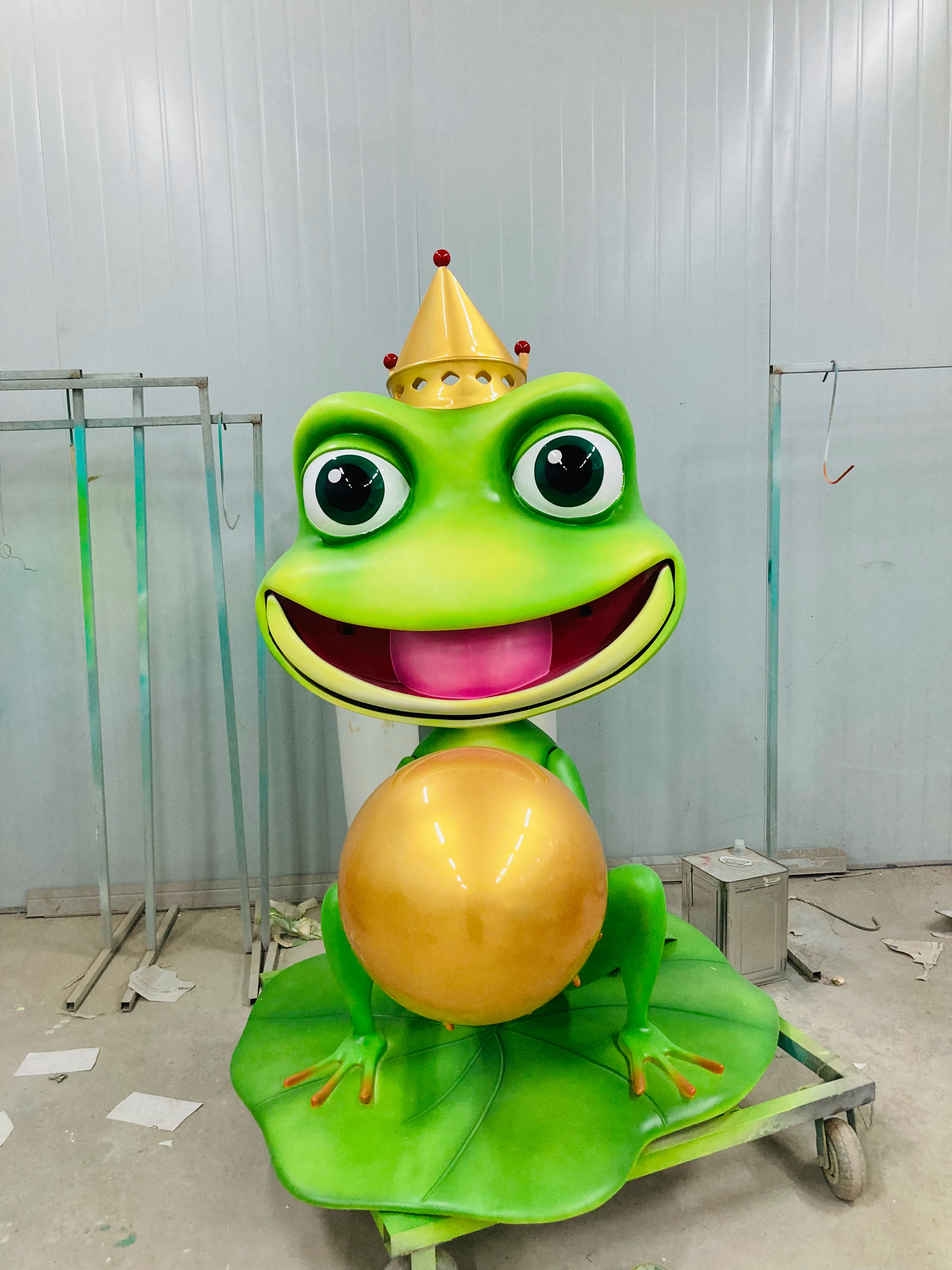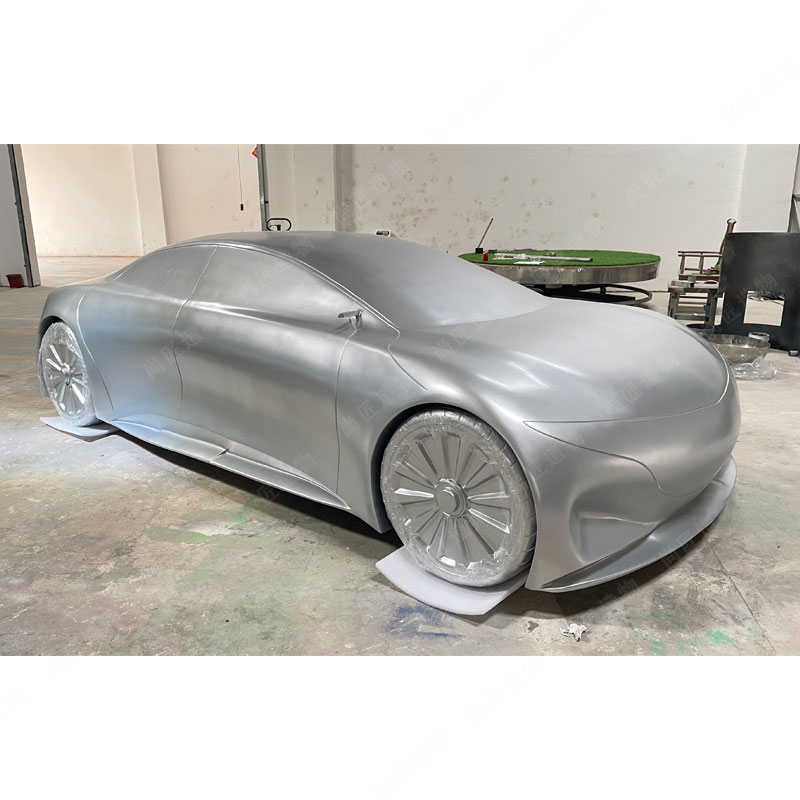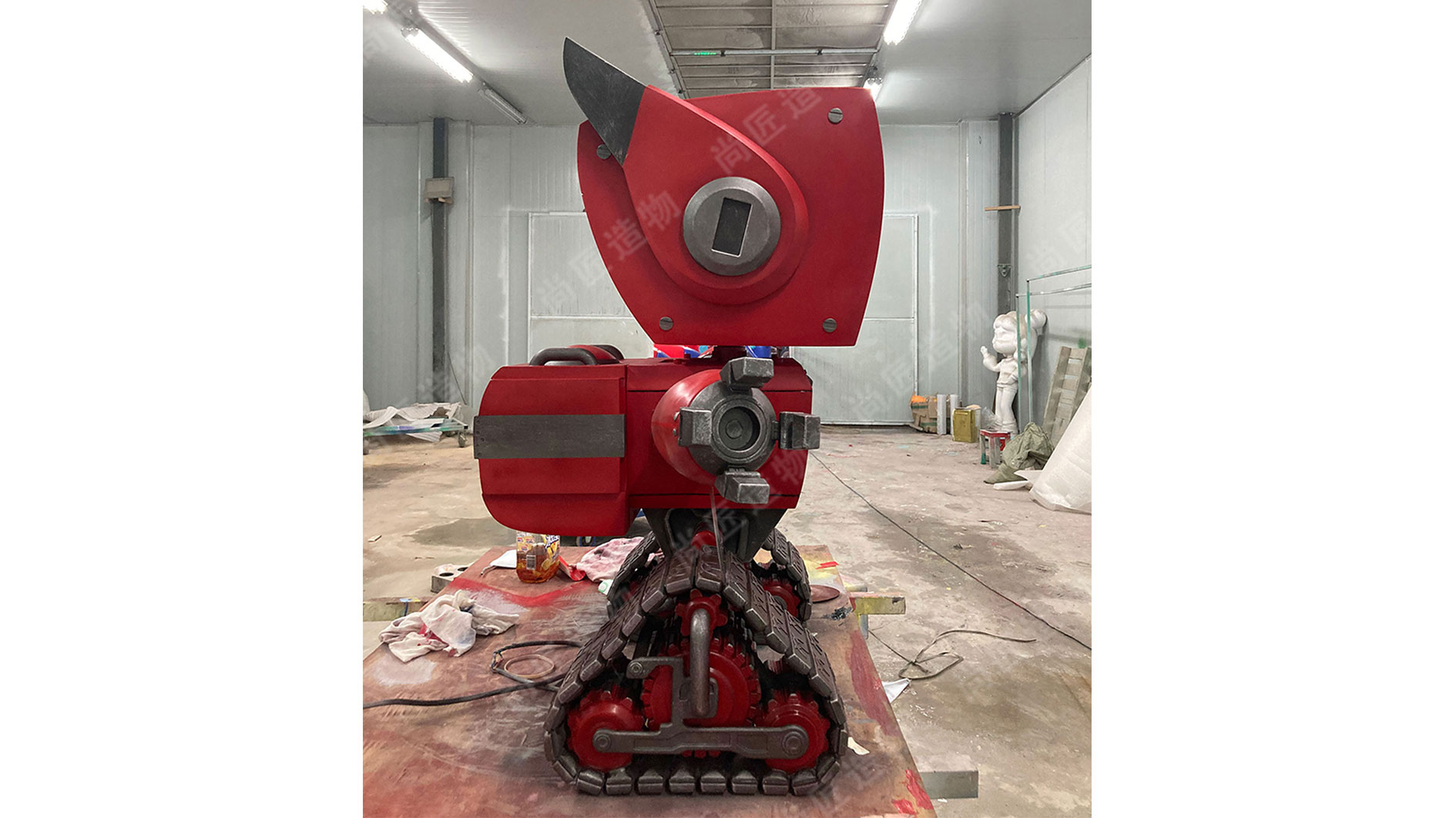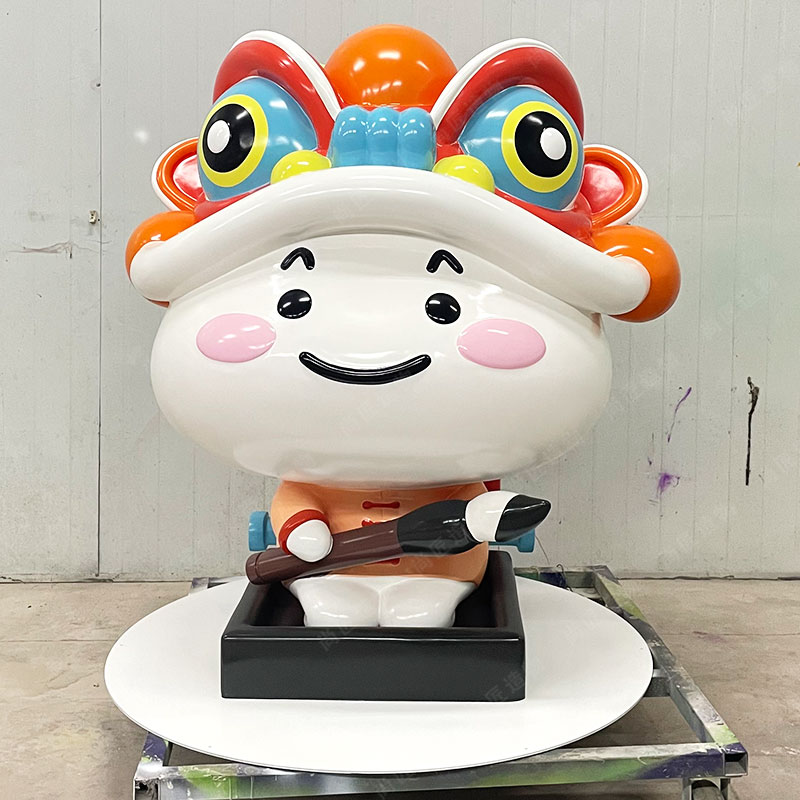Key Takeaways
Cartoon sculpture bridges artistic heritage and modern commercial practices, evolving from static figurines to dynamic 3D art forms. IP (Intellectual Property) characters, such as Mickey Mouse or Pokémon, exemplify how nostalgia and brand value merge to create culturally resonant collectibles. Below are critical insights into this intersection of art, technology, and commerce:
| Aspect | Classic Sculpture | Modern Trends |
|---|---|---|
| Materials | Clay, bronze, wood | Fiberglass sculpture, resin, 3D-printed polymers |
| Purpose | Artistic preservation | Commercial collectibles, fan engagement |
| Techniques | Hand-carving, molding | Digital sculpting, AR integration |
| Cultural Role | Memorializing folklore | Reflecting pop culture trends |
"IP sculptures are more than art—they’re cultural time capsules. Their evolution mirrors how society values storytelling across generations." — Elena Torres, 3D Animation Historian
Tip: For aspiring creators, blending traditional sculpting methods with digital tools (like ZBrush or Blender) can enhance detail while maintaining tactile authenticity. Meanwhile, collectors should prioritize limited-edition pieces, as their value often appreciates with cultural relevance.
The shift from classic to contemporary practices highlights how 3D advancements democratize sculpture creation, enabling smaller studios to compete with major franchises. However, challenges persist in balancing artistic integrity with commercial demands—especially when adapting 2D characters into tactile forms. This duality underscores the importance of preserving craftsmanship while embracing innovation.

Cartoon Sculpture Heritage & Modern Trends
Cartoon sculptures bridge historical artistry with contemporary innovation, preserving iconic characters while adapting to evolving creative techniques. Early examples, such as mid-20th-century figurines of Mickey Mouse or Bugs Bunny, reflect handcrafted traditions rooted in animation’s golden age. These works often emphasized exaggerated features to capture a character’s essence, leveraging materials like ceramic or resin for durability. Today, advancements in 3D modeling and stainless steel sculpture techniques enable hyper-detailed renditions, merging nostalgia with sleek modern aesthetics.
Artists now reinterpret classic designs through minimalist forms or abstract textures, appealing to both collectors and public art installations. For instance, reimagined Popeye statues might incorporate geometric patterns, balancing recognition with avant-garde flair. Meanwhile, cultural preservation efforts ensure vintage styles remain influential, as seen in museum exhibitions showcasing original Betty Boop or Felix the Cat sculptures. This duality—honoring legacy while embracing innovation—highlights cartoon sculpture’s role as a dynamic medium. By integrating digital prototyping and sustainable materials, creators ensure the art form stays relevant across generations, reflecting shifts in both artistic taste and technological possibility.
IP Characters: Art Meets Commerce
The intersection of intellectual property (IP) characters and sculpture reveals a dynamic fusion of artistic expression and commercial strategy. Iconic cartoon figures, once confined to screens or pages, now materialize as tangible sculptures, bridging nostalgia with modern merchandising. Licensing agreements drive this synergy, transforming beloved characters into collectible statues, theme park installations, and limited-edition art pieces. For instance, franchises like Disney and Pokémon leverage sculptural adaptations to extend brand reach while honoring visual legacies.
This commercialization does not dilute artistic value but amplifies it. Sculptors balance fidelity to original designs with creative reinterpretations, ensuring each piece resonates with both fans and art collectors. The rise of realistic sculpture techniques, particularly in 3D printing, enables intricate detailing—from expressive facial features to dynamic poses—that elevates mass-produced items into premium artifacts. Meanwhile, collaborations between studios and independent artists inject fresh perspectives, blurring lines between pop culture and fine art.
Economically, IP character sculptures thrive in global markets, appealing to millennials and Gen Z audiences who value experiential consumption. Limited releases and exclusive partnerships create scarcity, fueling demand in secondary markets. Yet, beyond profit, these works preserve animation history, transforming ephemeral characters into enduring cultural symbols that transcend generations.

3D Evolution in Animation Sculptures
The transition from traditional sculpting methods to 3D technology has revolutionized how animation-inspired characters are brought to life. Early cartoon sculptures relied on handcrafted clay or resin models, limiting scalability and intricate detail. Today, advancements in 3D printing and digital modeling allow artists to replicate iconic IP characters with millimeter precision, while experimenting with dynamic poses and textures previously deemed impractical. Tools like ZBrush and Blender enable creators to refine designs iteratively, merging nostalgic aesthetics with hyper-realistic surfaces. This shift has also democratized production, enabling smaller studios to compete in the collectibles market by leveraging cost-effective prototyping.
A notable innovation is the integration of kinetic sculpture principles into 3D-printed works, where movable parts mimic animated motion—think of a Spider-Man figurine mid-swing or a Pixar robot with articulating limbs. Such hybrid designs bridge static art and performance, appealing to both collectors and casual fans. As 3D scanning preserves legacy characters for future generations, the technology ensures that beloved cartoons remain culturally relevant, adapting to modern tastes without losing their original charm.
Cultural Significance of Cartoon Statues
Cartoon statues serve as tangible bridges between generations, preserving animated characters that shaped childhoods and defined cultural moments. These sculptures transform fleeting screen time into enduring physical forms, allowing audiences to interact with icons like Mickey Mouse or Snoopy beyond their original media. Public installations, such as cartoon sculpture displays in urban spaces or theme parks, often become communal landmarks, fostering shared nostalgia and collective identity.
Beyond nostalgia, these works reflect societal values—heroic figures symbolize courage, while whimsical designs celebrate creativity. Museums increasingly recognize animation art as worthy of preservation, curating statues alongside traditional art to highlight their role in visual storytelling. As 3D printing and digital modeling advance, even classic characters gain new layers of cultural relevance, adapting to contemporary aesthetics while retaining their historical roots. This interplay between legacy and innovation ensures cartoon statues remain dynamic symbols of artistic and social evolution.

Collectible Dynamics in Character Art
The intersection of artistic value and commercial demand shapes the collectible market for character-based sculptures. Limited-edition releases, often tied to iconic franchises or anniversaries, drive scarcity and exclusivity—key factors in determining monetary worth. For example, IP character sculpture editions authenticated by studios or artists regularly appreciate due to their cultural resonance. Meanwhile, advancements in 3D printing enable precise replicas of classic designs, broadening accessibility while challenging traditional notions of rarity.
Collectors increasingly prioritize pieces that balance nostalgia with modern aesthetics, such as reimagined retro characters using metallic finishes or abstract textures. This shift mirrors broader trends in pop culture, where reinterpretations of legacy IPs attract both longtime fans and new audiences. Licensing partnerships further amplify demand, as collaborations between sculptors and entertainment brands merge artistic innovation with commercial strategy. Such dynamics not only sustain the market’s growth but also reinforce the role of character art as tangible bridges between storytelling and material culture.
From Classic to Contemporary Sculpting
The transition from classic to contemporary sculpting reflects broader shifts in artistic techniques and cultural priorities. Early cartoon sculptures, rooted in handcrafted traditions, relied on materials like clay, bronze, or resin to immortalize characters such as Mickey Mouse or Popeye. These works prioritized durability and tactile appeal, often serving as public monuments or studio collectibles. Today, advancements in 3D modeling and digital fabrication have expanded possibilities, enabling hyper-detailed reproductions of characters from franchises like Spider-Man or My Hero Academia. Artists now blend traditional sculpting skills with tools like ZBrush or photogrammetry, creating pieces that balance nostalgia with cutting-edge aesthetics.
This evolution also mirrors changing audience expectations. While classic sculptures emphasized physical presence and craftsmanship, modern works increasingly incorporate interactive elements, such as augmented reality features or modular designs. Materials like biodegradable plastics and recycled metals further align with sustainability trends. Despite these innovations, the core goal remains unchanged: transforming two-dimensional animations into tangible forms that resonate across generations. The interplay between old and new methods continues to shape how iconic characters are reimagined, ensuring their relevance in both art galleries and pop culture markets.

Animation-Inspired Sculpture Innovations
Modern advancements in materials and digital tools have redefined how artists translate animated characters into physical sculptures. Techniques like 3D printing now allow for precise replication of intricate designs, enabling creators to preserve the whimsical details of classic cartoons while experimenting with new textures—such as translucent resins or metallic finishes. For instance, Studio Ghibli’s iconic characters, once confined to screens, now appear as layered acrylic sculptures that mimic the fluidity of hand-drawn animation.
At the same time, augmented reality (AR) integration bridges the gap between static sculptures and dynamic storytelling. Collectors can scan a figurine with their smartphones to unlock mini-animations or behind-the-scenes content, adding interactive value. This fusion of tradition and technology extends beyond aesthetics; it revitalizes cultural narratives by making them accessible to younger audiences. Meanwhile, traditional sculptors are adopting hybrid workflows, sketching digitally before shaping clay or resin—a process that honors legacy methods while embracing efficiency.
These innovations also intersect with commercial strategies. Limited-edition AR-enabled sculptures, for example, drive demand among both art enthusiasts and tech-savvy collectors, illustrating how animation-inspired works continue to shape markets beyond mere nostalgia.

Cartoon Art Preservation Through Sculptures
Sculptures have become a vital medium for preserving the visual legacy of iconic cartoon characters, bridging the gap between fleeting animation and enduring physical art. Unlike traditional screen-based media, three-dimensional representations transform beloved IP characters into tangible artifacts, safeguarding their cultural relevance for future generations. For instance, early 20th-century figures like Mickey Mouse or Betty Boop, originally confined to celluloid reels, now exist as bronze or resin statues in museums and public spaces, ensuring their stories remain accessible even as technology evolves.
Modern sculptors employ advanced techniques such as 3D scanning and archival-grade materials to replicate classic designs with precision, while also addressing degradation risks faced by older works. This approach not only honors the original artistic intent but also adapts characters to contemporary preservation standards. Museums and private collectors increasingly recognize these sculptures as historical documents, offering insights into shifting aesthetic values and societal influences across decades. By immortalizing cartoons in physical form, artists and institutions create a dialogue between past creativity and present-day appreciation, reinforcing the role of sculpture as a timeless custodian of animated heritage.
Conclusion
The journey from classic cartoon sculptures to contemporary IP character art reveals a dynamic interplay between tradition and innovation. As cultural artifacts, these sculptures preserve animation history while adapting to modern aesthetics and technologies. The rise of 3D modeling and digital fabrication has expanded creative possibilities, allowing artists to reinterpret beloved characters with unprecedented precision. Simultaneously, the commercial collectibles market thrives, driven by fan nostalgia and strategic brand storytelling.
This evolution underscores a broader cultural dialogue: how art forms balance heritage with relevance in a rapidly changing world. By bridging generations through tactile artistry, cartoon sculptures continue to shape collective memory while inspiring new waves of creativity. Their enduring appeal lies not only in visual charm but in their ability to translate fleeting animated moments into lasting physical forms, ensuring that iconic characters remain anchored in both art history and popular culture.
Frequently Asked Questions
What defines an IP character sculpture?
IP character sculptures are three-dimensional artworks based on intellectual property, such as cartoon or animation figures. They blend artistic craftsmanship with recognizable characters, often serving as bridges between creative storytelling and tangible art forms.
How do IP sculptures differ from traditional statues?
While traditional statues focus on historical or cultural figures, IP sculptures prioritize pop culture icons. Modern techniques like 3D printing and digital sculpting allow for intricate detailing, aligning these works with contemporary aesthetics and mass production needs.
Why are cartoon sculptures culturally significant?
They preserve animation history by immortalizing characters in physical form. These sculptures also reflect societal trends, acting as markers of generational nostalgia and evolving artistic preferences in public spaces or private collections.
How has 3D technology transformed animation-inspired sculptures?
Advanced software enables precise replication of cartoon features, from exaggerated expressions to dynamic poses. This shift has expanded accessibility, allowing fans and smaller studios to create professional-grade collectibles previously limited to major franchises.
What role do commercial factors play in character sculptures?
Licensing agreements and brand collaborations drive the market, with limited editions boosting exclusivity. Collectors often value pieces for emotional connection and investment potential, merging fandom with economic dynamics.
How do modern sculptors balance artistry with IP guidelines?
Artists negotiate creative freedom against strict brand standards, often innovating within set parameters. This balance results in works that honor original designs while incorporating unique textures, materials, or experimental finishes.
What future trends might shape IP character sculptures?
Expect increased use of augmented reality for interactive displays and eco-friendly materials to address sustainability concerns. Cross-industry collaborations, like gaming or streaming platforms commissioning statues, could further blur digital and physical art boundaries.
 ch
ch English
English






